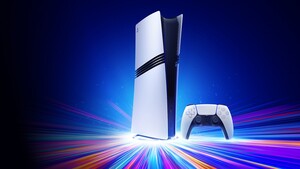EET: Then the Cell processor was conceived for gaming?
Kutaragi: No, it is for computing — but I wanted to change the concept of computers. The name of our company is Sony Computer Entertainment; I wanted to merge computer technology and entertainment. It may be regarded as game applications for the time being, but I wanted to realize the day when "computer entertainment" would mean all such entertainment applications, including games.[...]
EET: The Cell processor targets general-purpose applications. Does it satisfy all the requirements for a game processor?
Kutaragi: All of those requirements have been incorporated; we did not compromise the processor.
The Cell processor will completely change the concept of programming. Conventionally, programming has sought to pull out the best performance from a closed processor and a certain capacity memory. The Cell processor assumes the existence of multiple Cells.
The model image for the Cell-based network may be the Internet: Servers around the world form one virtual "computer," and each PC accesses it. One Cell or cluster of Cells can also function as a server; but whereas the present Internet mainly handles characters, applications on the Cell network will also handle semantics and reasoning.
Though sold as a game console, what will in fact enter the home is a Cell-based computer.
People now have various media in their homes, but those media are not yet organized. The Cell handles those media intelligently. For example, it can compile images and video footage of you by recognizing your images from a vast accumulation [of images]. When used for security, it could use image recognition to identify the presence of a stranger in a monitored area.
The Cell enables enormous applications that require image processing and large-volume computing. Using the Cell, it would be easy to form a secure home network that would connect home audio and video devices.[...]
The Cell processor has a kernel called Level 0 at the bottom. This level is not disclosed and is kept secure. Level 1 handles operations close to the kernel, such as scheduling, the real-time kernel and device drivers. Level 2, which we call the guest OS layer, is for general-purpose operating systems such as Linux and PC OSes and operating systems for the Playstation. All operating systems and applications run on Level 2 or higher. Programmers can concentrate on their targeted area of concern without worrying about other operating systems.



